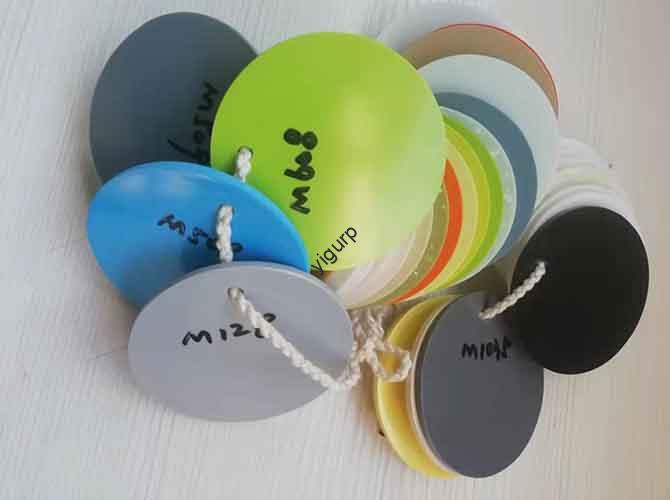If you’ve ever struggled with removing support structures from 3D prints—scratching delicate parts, using harsh chemicals, or leaving messy residues—you’re not alone. Решение? 3D printing PVA materials. Polyvinyl Alcohol (ПВА) stands out as a game-changing support material, благодаря своим уникальным характеристикам, которые решают распространенные головные боли, связанные с 3D-печатью.. Давайте погрузимся в то, как это работает, как его использовать, и почему это необходимо для сложных проектов.
1. Основные свойства материалов ПВА для 3D-печати
Что делает ПВА таким особенным для 3D-печати? Его четыре ключевых свойства решают самые большие проблемы вспомогательных материалов.. Таблица ниже разбивает их на части.:
| Свойство | Описание | Проблема, которую она решает |
| Water Solubility | Dissolves completely in water; rate depends on water temperature (faster in warm water) and flow speed. | Eliminates the need for chemical solvents or manual scraping to remove supports. |
| Биосовместимость & Degradability | Нетоксичный, безопасно для контакта с тканью человека; биоразлагаемый (breaks down naturally over time). | Enables use in medical/healthcare applications (НАПРИМЕР., Хирургические гиды) and reduces environmental waste. |
| Strong Adhesion | Bonds tightly with thermoplastics like PLA, CPE, and nylon—no support separation mid-print. | Prevents support failure during printing of complex parts (НАПРИМЕР., свес, Внутренние полости). |
| Physical Durability | Transparent to off-white appearance; odorless, нетоксичный; brittle texture but high tensile strength (22МПА) и удлинение (360%). | Supports hold shape during printing but are easy to dissolve afterward—no damage to the final part. |
2. Критические условия использования 3D-печати ПВА
To get the best results with PVA, you need to nail three key settings. Get these wrong, and you’ll face issues like poor adhesion, brittle supports, or failed prints. Here’s how to set them correctly:
2.1 Температура сопла: 180–200 ° C.
PVA melts smoothly in this range, but always check the manufacturer’s recommendations—different brands may vary (НАПРИМЕР., a high-purity PVA might work best at 185°C, while a blended PVA could need 195°C).
Почему это важно: Слишком низко (below 180°C) = PVA won’t melt fully, leading to stringing. Слишком высоко (above 200°C) = PVA may degrade, causing clogs in the nozzle.
2.2 Температура кровати: 45–60 ° C.
A warm bed ensures PVA sticks firmly during printing. Например:
- When printing a PLA part with PVA supports, set the bed to 50°C—this keeps both materials anchored without warping.
- For nylon parts (which need higher bed temps), bump the bed to 60°C to match nylon’s requirements while keeping PVA stable.
2.3 Охлаждение: Только частичное использование вентилятора
PVA needs gentle cooling—never use full fan power. Here’s the rule:
- Turn on the cooling fan to 30–40% after the first 2–3 layers.
- Avoid cooling overhangs too much—excessive cooling makes PVA brittle, causing supports to snap mid-print.
Пример: A user printing a complex chess piece with PVA supports used full fan cooling and saw supports break at the knight’s neck. Переключение на 35% fan power fixed the issue.
3. Хранилище: Как сохранить ПВА сухим (И эффективный)
PVA has strong deliquescence—it soaks up moisture from the air like a sponge. Moist PVA causes:
- Stringing during printing.
- Плохой адгезия слоя.
- Nozzle clogs.
Follow this 3-step storage process to keep PVA in top shape:
- Seal Immediately: После использования, put unused PVA filament back into its original airtight bag.
- Add Desiccants: Place 2–3 silica gel packs in the bag to absorb residual moisture.
- Store in a Cool, Dry Place: Keep the bag away from windows (солнечный свет) or sinks (влажность). A closet or storage box works perfectly.
Для чаевого: If your PVA feels damp (it may feel sticky to the touch), dry it in a filament dryer at 40–45°C for 2–4 hours before use.
4. Приложения: Где ПВА сияет ярче
PVA’s biggest strength is enabling complex prints that other support materials can’t handle. Here are three key use cases:
4.1 Сложная геометрия & Внутренние полости
Imagine printing a model of a human heart with internal blood vessel channels—PVA supports fill those channels, then dissolve in water, оставив чистую, hollow structure. Without PVA, you’d have to drill out supports (destroying the delicate channels).
4.2 Концептуальные модели & Прототипы
Designers love PVA for rapid prototyping. Например, a toy company used PVA to print a prototype of a puzzle with interlocking pieces—PVA supports held the pieces in place during printing, and dissolving them revealed a fully functional puzzle in just 24 часы.
4.3 Медицинский & Запчасти для здравоохранения
Thanks to its biocompatibility, PVA is used for medical tools like custom surgical guides. A hospital printed a guide for knee surgery using PLA (for the main structure) and PVA (for supports). After surgery, the guide was dissolved in water—no waste, no risk of leaving support fragments in the body.
5. Перспектива Yigu Technology
В Yigu Technology, we recommend PVA to clients working on complex designs—from aerospace components to medical devices. Its water solubility eliminates post-printing hassle, and its adhesion to PLA/nylon ensures reliable prints. Самая большая ошибка, которую мы видим? Poor storage—moist PVA is the #1 cause of failed support prints. We always advise clients to invest in a filament dryer and airtight storage containers—it’s a small cost that saves hours of reprinting. PVA isn’t just a support material; it’s a tool to unlock design freedom.
Часто задаваемые вопросы
- Can PVA be used with all 3D printers?
Да, but it works best with FDM (Моделирование сплавленного осаждения) принтеры (самый распространенный тип). Resin printers don’t use filament, so PVA isn’t compatible with them.
- Сколько времени нужно, чтобы растворить поддержку PVA?
It depends on water temperature: Warm water (40–50 ° C.) dissolves supports in 30–60 minutes; cold water takes 2–3 hours. Agitating the water (НАПРИМЕР., using a stirrer) speeds up the process.
- Is PVA safe for food-contact parts?
Most 3D printing PVA is non-toxic, but check the manufacturer’s specs—look for “food-grade” certification if you’re printing parts like cookie cutters or utensils. Non-food-grade PVA may have additives that aren’t safe for food contact.
